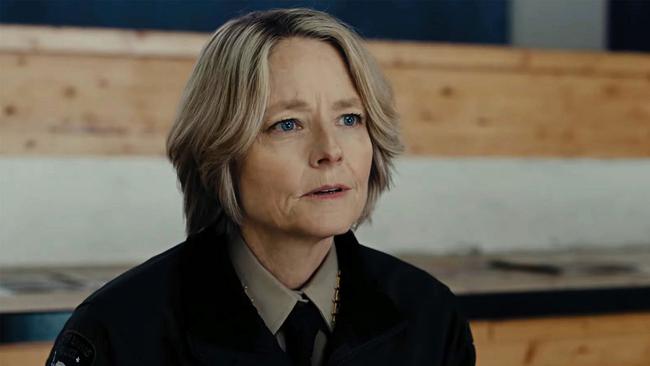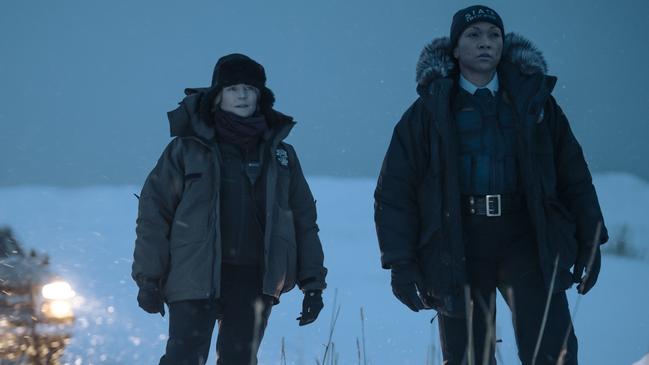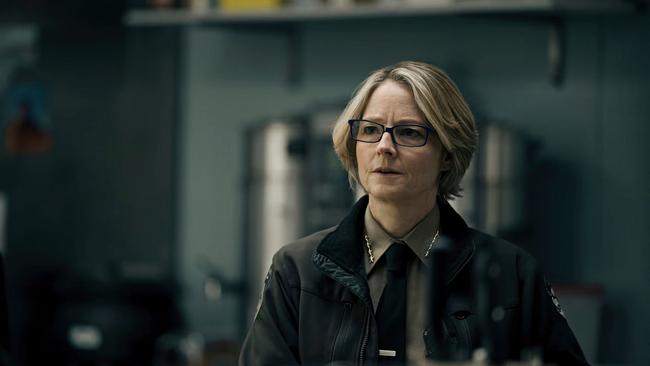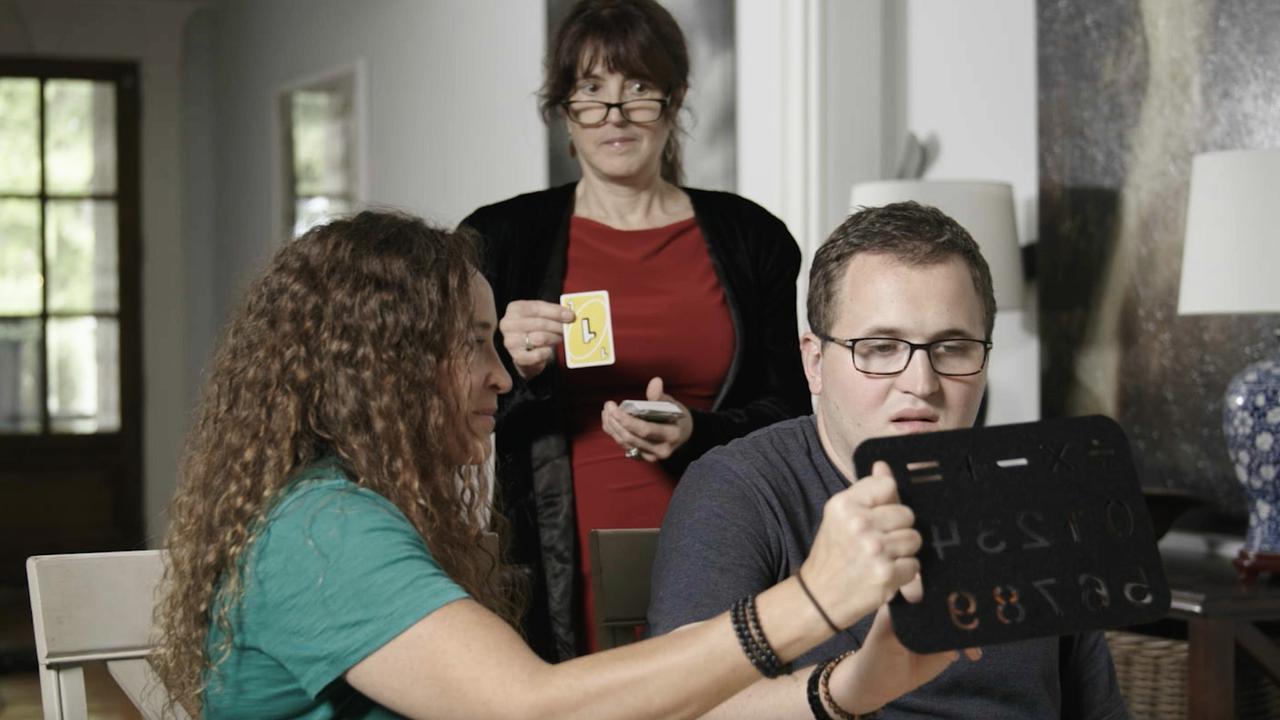Jodie Foster shines in dark role on brilliant True Detective TV reboot
The latest True Detective crime series, featuring the Silence with the Lambs megastar, is set in the dark, frozen landscapes of Alaska and is chilling in every sense.

True Detective arrived in 2014 and for a while it changed the TV landscape. This HBO series, created by Nic Pizzolatto and directed by Cary Fukunaga, introduced audiences to a dark and mysterious world filled with complex characters, a haunting atmosphere, with a singular Southern Gothic voice unlike any other in TV, and a deeply mystifying storyline. True Detective was not fact-based, despite the title, which seems to deliberately hark back to the era of the detective pulp magazines, with their private eye stories, adventure capers, and crime dramas, with titles like I’ll Be Slaying You and Your Corpses Are Showing.
Instead, True Detective followed the way the lives of two homicide cops collided and entangled during a 17-year hunt for a killer, from the original investigation of a bizarre murder in 1995 to the reopening of the case nearly 20 years later.
It felt and sounded startlingly original, an amalgam of highbrow fiction, thriller, philosophical primer, cutting social commentary and a fine piece of police procedural.
Other series followed but none had the same effect, unfairly critically disparaged in my view. Now the drama anthology finally returns for a fourth season after a nearly five-year hiatus, created, written and directed by Mexican film maker Issa Lopez, who made the impressive fantasy horror movie Tigers Are Not Afraid. (Guillermo del Toro called it one of the best horror films of the decade.)

And while, like most of us, she loves a good murder story, Lopez is clear about her preference, something that comes easily to the Mexican storyteller. “I’m not so much of a fan of the cosy mystery,” she says. “I like the dark, f..ked-up mystery.” Her take was simple – create a “dark mirror” to the famous first season. “Where True Detective is male and it’s sweaty, Night Country is cold and it’s dark and it’s female.”
Lopez began her career writing telenovelas and romantic comedies, adept at shifting between genres. “As a Mexican, our survival tool in the face of horror is both beauty and laughter,” she told Vanity Fair. “That’s how we cope with it … The most salient feature of Mexican culture is how we laugh and celebrate death and bones.”)
The first series took place in a territory that seemed post-apocalyptic but was actually the America left behind after the economy and tradition collapsed. Together, detectives Woody Harrelson’s Martin Hart and Matthew McConaughey’s Rust Cohle prowled a territory that looked dystopian: a corrupted, degrading Eden that Washington forgot, a landscape of deserted power plants, desolate burned-out churches, highly armed drug-running bikers and isolated communities crawling with religious zealotry; a place where almost nothing or no one is exactly who or what they seem to be.
The new season takes us to the fictional Alaskan town of Ennis, located just north of the Arctic Circle, the sun about to set, and night seemingly lasting for weeks, the darkness hiding all kinds of strange doings that occur in such lightless conditions.
It’s a time when the dead and the departed, the spirits of the past come forth to deal with unresolved issues it seems, a sense that ancient entities are never destroyed, merely dormant. “I thought it was the perfect environment; this town at the end of the world where reality is coming apart at the seams, and sometimes we can peek through the fabric of things, and you can see the dead walking with you,” says Lopez.
The story is prefaced with a quotation from a certain Hildred Castaigne, the fictional narrator of horror writer Robert Chambers’ The Repairer of Reputations, a short story published in the collection The King in Yellow in 1895. It plays as Billie Eilish croons in that husky, sorrowful voice: “Bury a friend, try to wake up … I want to end.”
The reference is a direct link to the esoteric horror mythology of the first True Detective, and those upsetting mentions of Carcosa and the cult of the Yellow King, dredged up by creator Nic Pizzolatto from literary obscurity.
“For we do not know what beasts the night dreams of when its hours grow too long for even God to be awake”, it goes, and delivers a context of a vague supernaturalism to the unfolding narrative.

It’s something that Lopez delights in, this notion that powerful spirits roam freely in the dark, a madness loose in the lightless isolation.
We are taken to the Tsalal Artic Research Station investigating new tech solutions out in the permafrost, where eight scientists are found to have unexplainably disappeared, the Beatles’ Twist and Shout still eerily playing, hypnotic and abrasive, a white board with “We are all dead” crudely written on it, and a native woman’s tongue on the floorboards.
It’s the third night police chief Liz Danvers, brilliantly played by an edgy, tense Jodie Foster, a cop with a bitter laugh and an intense sense of self-deprecation, arrives at what might be a crime scene, that Beatles song still annoyingly playing. She’s well known for her “shitty f..king attitude”, a control freak with a rebellious daughter out of control. She’s accompanied by her colleagues, the sketchy Hank Prior (John Hawkes), a man carrying many grudges, and his idealistic son Peter (Finn Bennett), who is being mentored by Danvers.
The scientists have left behind their access passes, their cell phones, an uneaten sandwich; it’s as if the entire group has simply vanished into thin air. “It looks like they went to take a leak and never came back,” she mutters.
Lopez says she was inspired by two mysteries that have intrigued her since she was young. What happened to the Marie Celeste in 1872, the American brigantine found abandoned, drifting several hundred miles off the Azores with no one on board.
Then there’s the mystery of how in February 1959, a group of nine experienced Russian mountaineers perished during a difficult expedition in the northern Urals. Something unexpected happened during the night of February 1, which caused expedition members to run towards a forest, more than 1km downslope, without appropriate clothes, under extremely low temperatures, as strong winds induced by the passing of an Arctic cold front blew down the slope. “I think there is a fascination with puzzles that are still missing a couple of pieces, and that obsess us, and make us angry, and make us not stop thinking about them,” Lopez says.
Danvers’ investigation is soon joined by her former partner Evangeline Navarro, played by the highly charismatic Kali Reis, now demoted to state trooper after an incident between them some years earlier changed their chemistry.
Navarro is insistent Danvers also reopen a cold case with which she is obsessed involving Annie Kowtok, an Inupiaq activist murdered years earlier, stabbed many times, the murder weapon never found. Is it possible the two cases are connected? Navarro has a thing about women being hurt but Danvers is phlegmatic. “This f..king place – no killer’s ever going to be found,” she says.
There’s a lot going on in the dark – a local mining company polluting Ennis’s water supply, discord and distrust in the town’s families, a history of terrible racism, systemic abuse of native women, and the problems in the ice of climate change.
Danvers and her estranged former partner – it’s obvious they can hardly stand each other – must somehow unearth secrets buried in the ice, Danvers perpetually disagreeable but with a fine instinct for what lies behind disorder, Navarro instinctual with a feel for people. She also has a spiritual connection to the land, where the obstinate Danvers is blind to the indigenous community in which she lives.
And the show is certainly a stylish, highly cinematic piece of mystery investigation too, superbly shot by the celebrated cinematographer Florian Hoffmeister, best known for his work on Tar, which earned him an Academy Award nomination for Best Cinematography, a neo noir blend of thriller and horror. All the settings in the first episode radiate menace and instability, the icy, snowbound exteriors so beautifully filmed by Hoffmeister, create an environment that pulses with intimations of nightmare.
These settings are carefully and astutely chosen as visual metaphors for entrapment and enclosure, characterised by a dark tonality. The series isn’t perfect – at times Lopez’s many concerns overburden her central plot, and the pace slows too much but True Detective like Pizzolatto’s original is constantly unnerving. As Lopez says, its “eerie and sinister feeling” is what stays with you for days later.
True Detective: Night Country, streaming on Binge



